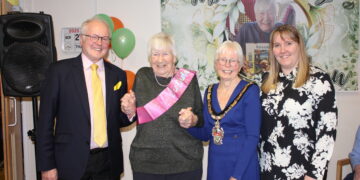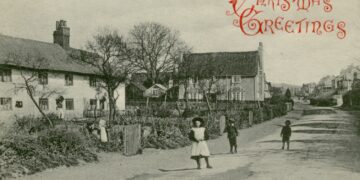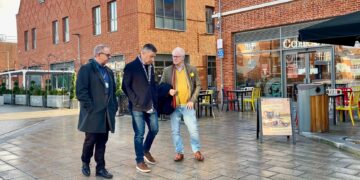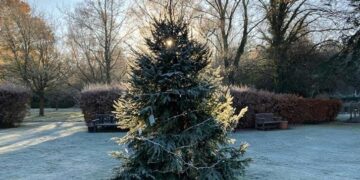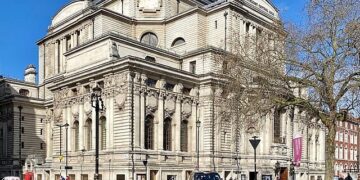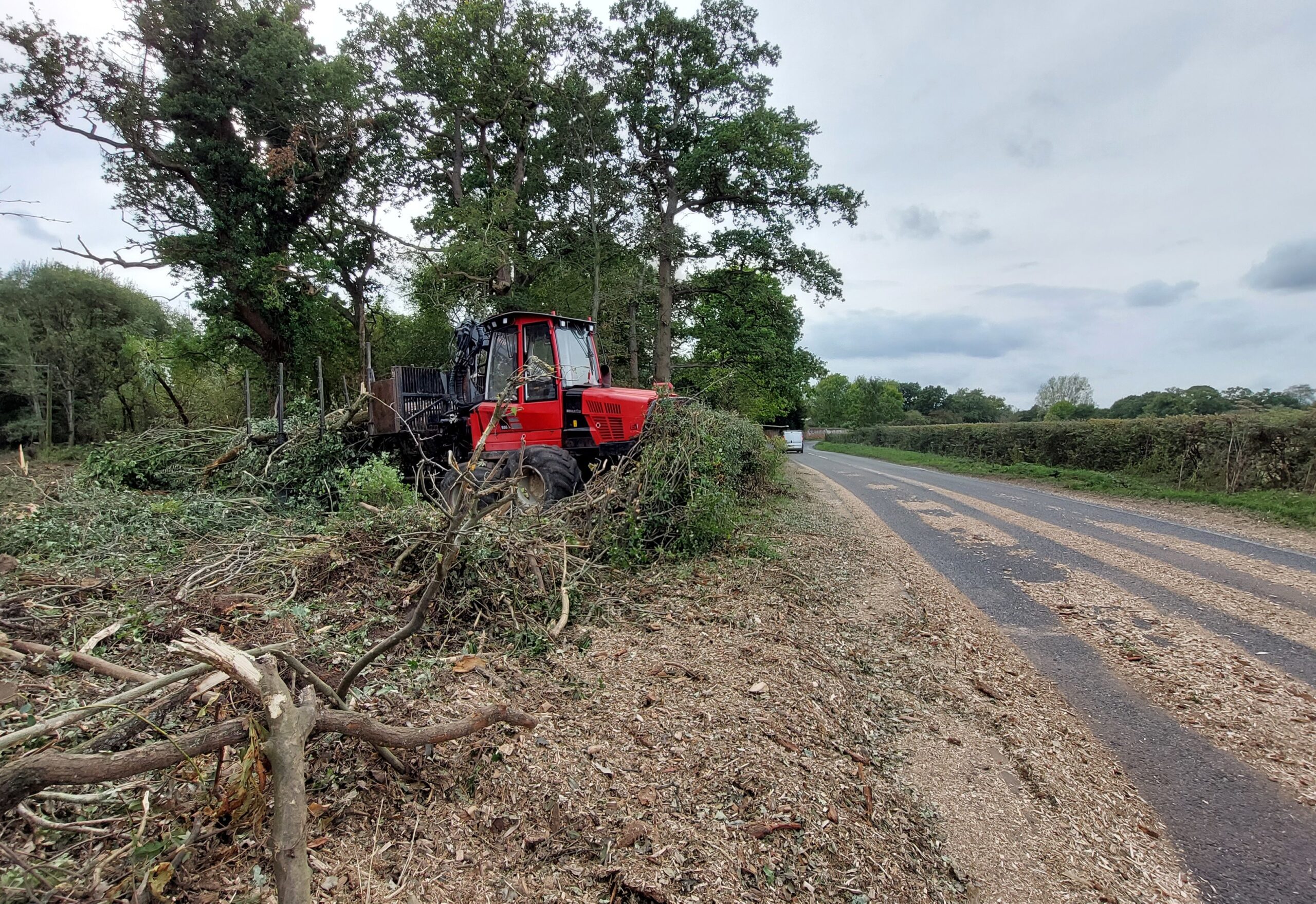A landowner has explained the reasons behind the destruction of eight metre wide swathes of woodland along two country roads.
Hurst and Twyford people have been asking why the woods have been stripped of their growth. Roadside hedging remains.
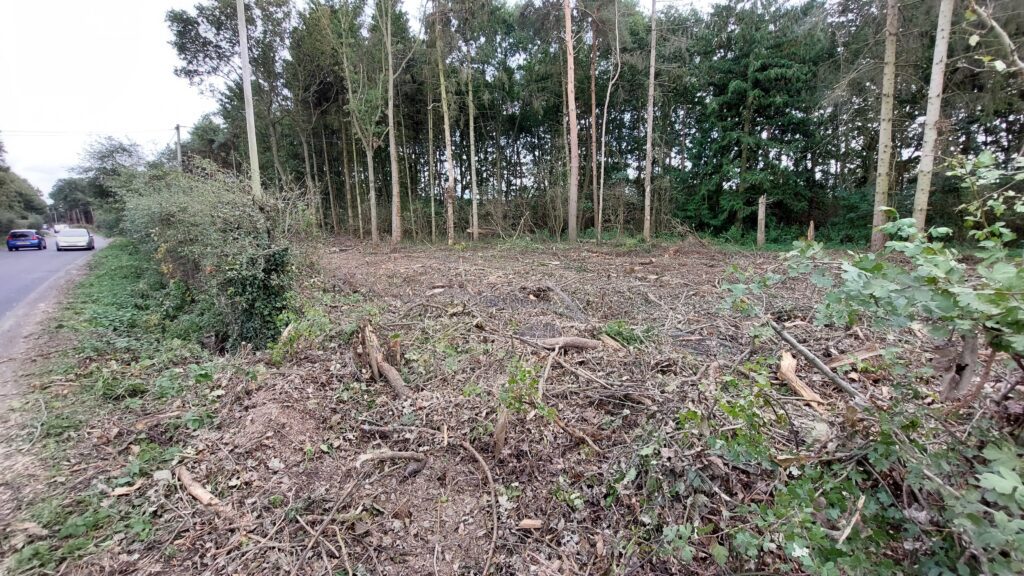
They’ve also complained that roads were left dangerous, covered by sawdust and chippings, that lorries were parked on blind corners and temporary traffic lights were not working.
A spokesman for the land owner, Haines Hill estate at Hurst, said: “I know it doesn’t look good at the moment … I get it that people are upset. But they shouldn’t be if they know the full story.”
He said the work was part of the estate’s woodland management plan. The government’s Forestry Commission requires a plan.
Part of it dealt with woodland on one side of both Hinton Road and the B3018 (parts of Waltham Road and The Straight Mile). Work at Broadcommon Lane was done some time ago.
The major reason for cutting was health and safety.
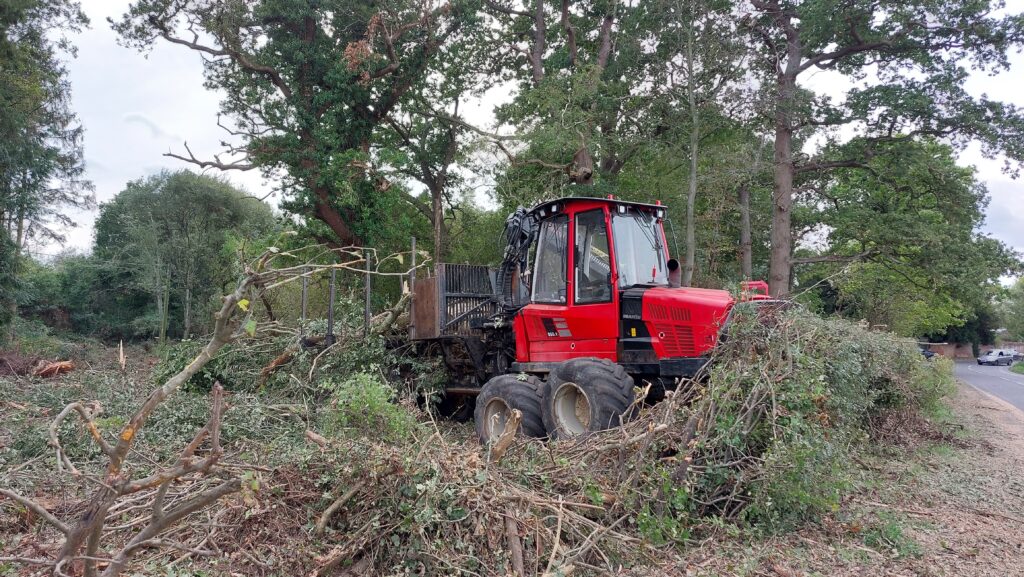
“We have been getting some very large storms in winter. Last winter was the final deciding factor for going ahead with this part of the plan,” he said.
A tree had fallen on the bonnet of a car travelling towards Wokingham. There was no sign of a driver who had apparently left in a hurry.
“There was no indication of anyone being hurt but they could have been. It’s the [land] owner’s responsibility to make sure it doesn’t happen.
“We had already tackled ten dangerous trees which were either dead or leaning dangerously towards the road. The tree which hit the car was perfectly healthy, but the storm ripped it out of the ground. It’s our liability if a tree does any damage.”
It was not possible to judge which trees could be dangerous and remove just them.
Another reason for the clearance was that the trees deprived the roadside hedge of light, making it very tatty, thin and missing in places.

New hedging including blackthorn and a rose, would be planted to make a “very nice hedge”, he said. “We’re copying what they’ve done at Windsor Great Park.”
The Great Park has given Haines Hill 15 oak trees grown from acorns from the best oak trees in the royal ancient woodland.
The roadside project was being handled by land agents Savills who had cleared it with the Forestry Commission. The Haines Hill spokesman said none of the trees involved had tree protection orders.
“We are concerned to let people know what is happening. Anyone can call up the estate office about this,” he said. Letters to Hurst Parish Council and Wokingham Borough Council’s tree officers had explained the situation.
The estate was concerned about the destruction of carbon benefit of the removed trees and was planting a larger area of new woodland.

“The new planting covers an area of 4.8 hectares (approximately 11.5 acres). This planting has already started and comprises varieties agreed with the Forestry Commission, including 45% oak, 20% hornbeam, 10% wild cherry, 15% hazel, 10% holly. The planting density will be not less than 1,100 stems per hectare, equating to at least 5,000 new trees,” he said.
The new woodland would replace the loss of habitat for wildlife. “We will be better off,” he said.






